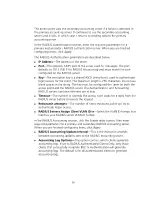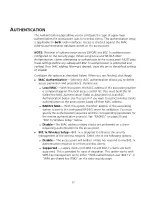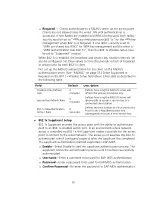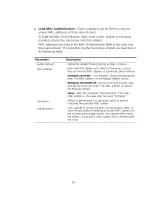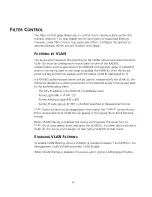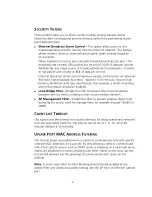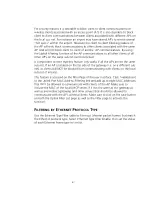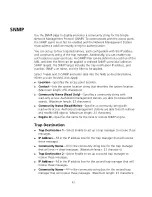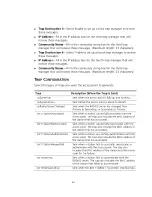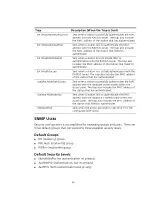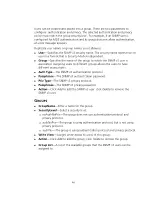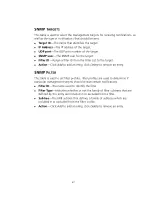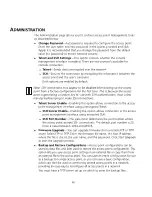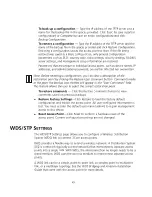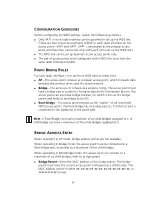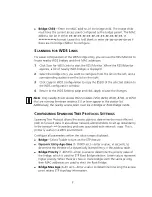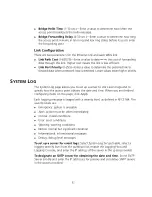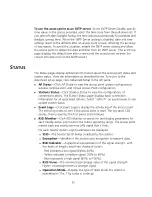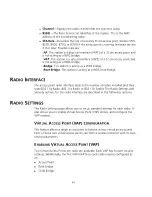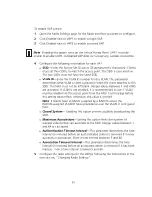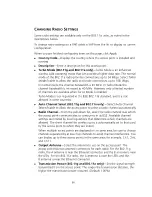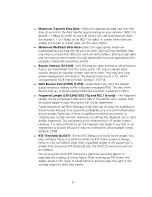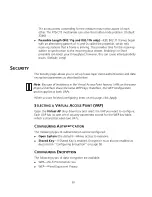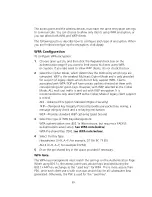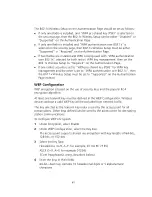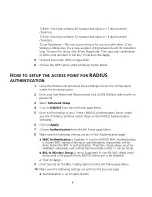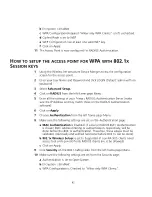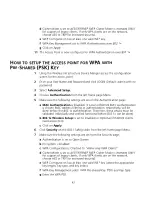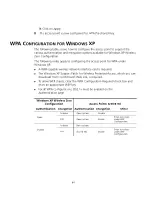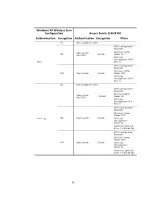
50
C
ONFIGURATION
G
UIDELINES
Before configuring the WDS settings, review the following guidelines:
Only VAP1 in each radio interface can be specified to set up the WDS link.
(There are two Virtual Access Points (VAPs) for each radio interface on the
access point—VAP1 and VAP2. VAP1 is designated as the physical access
point, and therefore, can be the only VAP specified to set up the WDS link.)
The WDS link can be set up between 3Com access points only.
The pair of access points to be configured with a WDS link must have the
same radio channel and SSID.
R
ADIO
B
RIDGE
R
OLES
For each radio interface, there are three WDS roles to select from:
AP
—The access point behaves as a regular access point, which forwards data
between the wireless clients and the wired network.
Bridge
—The access point behaves as a wireless bridge. The access point must
have a bridge parent to which it forwards data to the Distribution System. The
access point can also have bridge children, for which it acts as the bridge
parent and helps to send data to the DS.
Root-Bridge
—The access point behaves as the “parent” of all connected
WDS access points. The Root-Bridge has no bridge parents. Its Ethernet port is
connected to the backbone of the wired LAN.
B
RIDGE
A
DDRESS
E
NTRY
When operating in
AP
mode, bridge address entries are not available.
When operating in
Bridge
mode, the access point must be connected to a
Root-Bridge and, optionally, to a maximum of five child bridges.
When operating in
Root-Bridge
mode, the access point can connect to a
maximum of six child bridges, with no bridge parent.
Bridge Parent
—Enter the MAC address of the bridge parent. The bridge
parent must have the current access point configured as a child bridge. The
MAC address can be in either
ff:ff:ff:ff:ff:ff
,
ff-ff-ff-ff-ff-ff
, or
ffffffffffff
format.
Note
: A Root-Bridge can have a maximum of six child bridges assigned to it. A
child bridge can have a maximum of five child bridges assigned to it.

